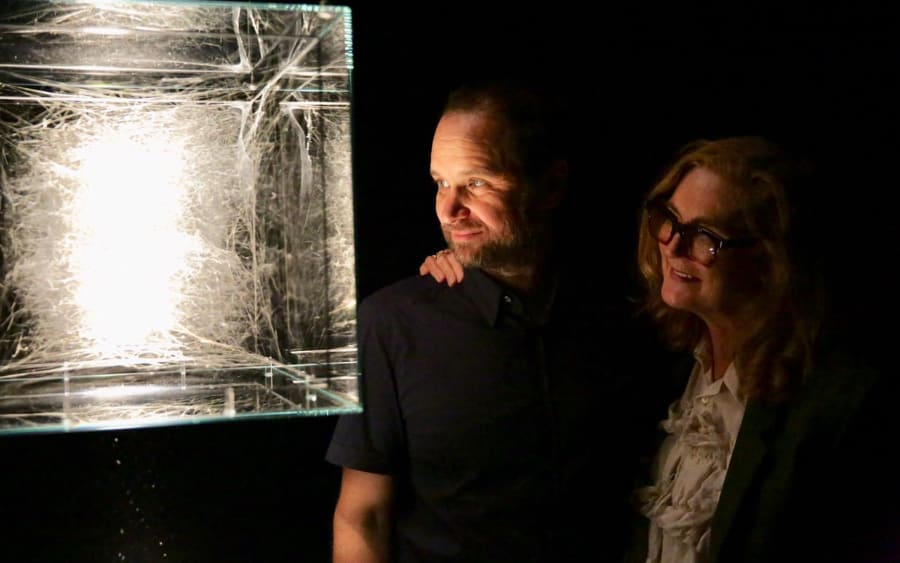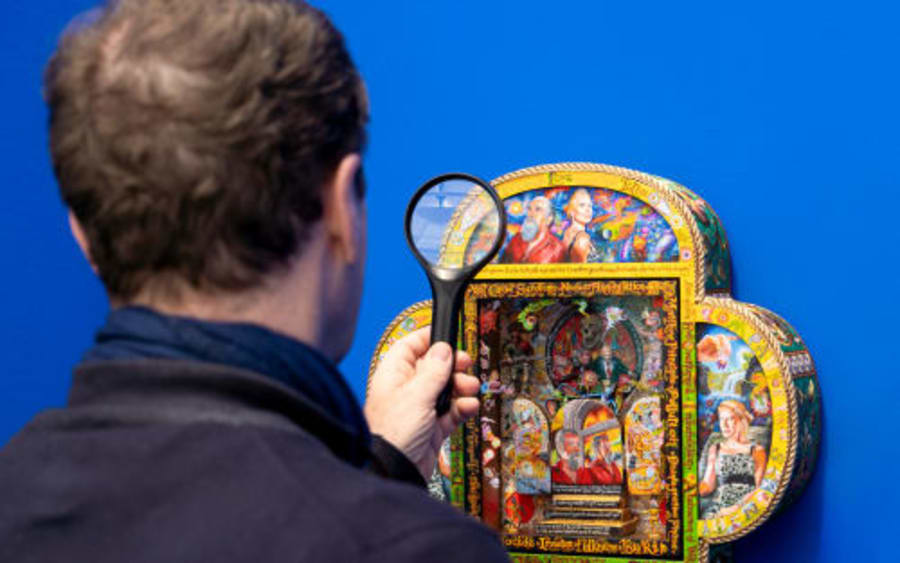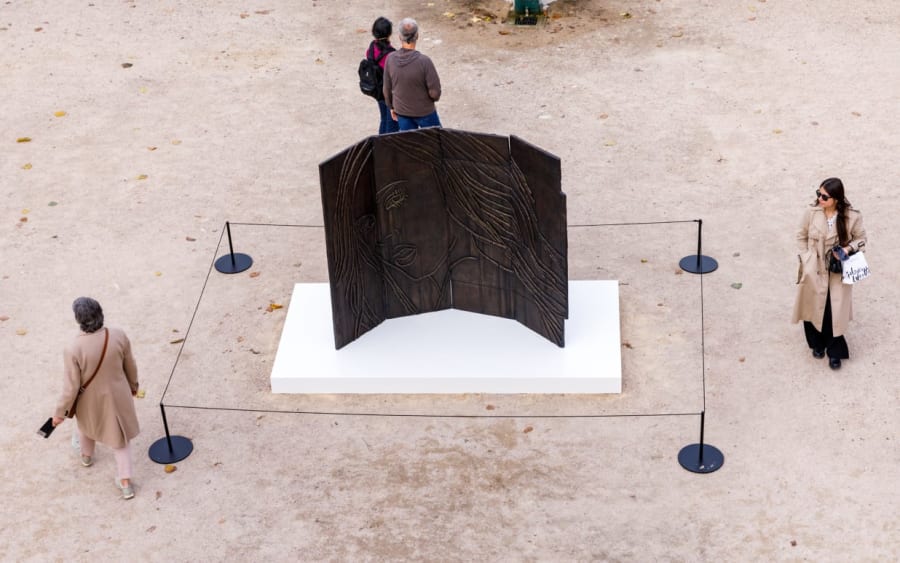As the art market gears up for the busy autumn season, half-year reports underscored that the trade is facing some of its most significant structural changes in several decades. According to Artnet’s ʻIntelligence Reportʼ published on 8 September, fine art auction sales dropped 8.8% in the first half of 2025 compared with the same period last year, while the average price per lot dropped 6.5% – the lowest half-year level in a decade. Supply and demand at the USD10m+ level were challenging, though momentum may be shifting, with strong results for the Karpidas collection at Sotheby’s, which soared past its high estimate, and the announcement of two blue-chip collection sales by the auction house. Dealers are honing their strategies as overheads rise and margins shrink. Several longstanding galleries, including Blum in Los Angeles and Venus Over Manhattan and Clearing, both in New York, recently announced closures. Still, the gallery business is notoriously difficult, and the art market is far from monolithic, with different dynamics in each sector. Encouragingly, with its increasingly fragmented sub-markets there are signs of resilience – and even growth, for example in the USD1m-–10m mark, according to Artnet’s new report. Here are seven trends we have seen in the first half of the year that may give cause for cautious optimism:
An end-of-year revival at the top end
After a drought at the top, high end auction consignments—and sales—are now rolling in. On September 17th, the auction of Pauline Karpidas’ Surrealist collection at Sotheby’s in London soared past its USD 53 million estimate to take USD 100 million (totals include fees, estimates do not), with 100 per cent of lots sold. With one sale still to go, the collection has already made its mark as an historic moment for the London art market - standing as the most valuable single-owner sale ever staged in the capital. The market is poised for further momentum at the top, with the auction house announcing that it will be selling the USD 400 million Leonard A. Lauder collection in New York in November, including a Klimt portrait valued at above USD 150 million. Two landscapes by the Austrian artist are valued at over USD 80 million and USD70 million each. The auction house will also consign the important Pritzker collection to its November auctions, estimated at USD 120 million, and led by a USD 40 million van Gogh.
Together we are stronger
Collaboration is gaining traction across the commercial art world as stakeholders navigate a less siloed, digitally attuned market. At the top end, a ‘super group’ of four people behind some of the biggest deals over the past 30 years have launched New Perspectives Art Partners.
Former auction house executives Ed Dolman, Brett Gorvy, and Patti Wong have joined Phillip Hoffman of The Fine Art Group to advise wealthy clients through major market shifts – notably on new buying habits among a younger collectors. Another cross-industry collaboration comes from Sotheby’s and Independent, whose 20th-century art fair moves to the auction house’s Breuer building in New York next year. Dealers are also forging new partnerships. Following Hauser & Wirth’s lead, galleries including Pilar Corrias and Goodman Gallery have begun working with artists outside their rosters in a bid to support new talent while diversifying their programs without long-term commitment. As more artists opt to work independently, expect to see more one-off or short-term collaborations with galleries, luxury brands, and other platforms.
Confidence in emerging artists – if priced right
Conventional wisdom suggests collectors retreat to tried-and-tested blue-chip art in downturns, yet the market for emerging artists – when priced judiciously – remains active. While auctions have cooled since the highs of recent boom years (Artnet reports that the ultra-contemporary market fell by 31.3% in the first half of 2025), many collectors with a less speculative approach to collecting continue to buy emerging artists. At The Armory Show in New York in early September, works by rising names drew strong – though not sold out-sales – mostly around the USD100,000 mark. ArtTactic’s July ʻArt Market Confidenceʼ report noted that despite falling auction sales, 41% of experts now expect recovery in the NextGen market (artists born after 1975), up from 33% in January.
Female Surrealists lead the way
2024 marked the centenary of the birth of Surrealism, and the movement’s artists continue to be a buoyant presence in the market, underscored by the success of the Karpidas auction, outlined earlier. A joint Sotheby’s and ArtTactic report published this month, shows that Surrealism’s share of the global market nearly doubled from 9.3% to 16.8% between 2018 and 2024. Women artists – still priced below their male peers and offering a lower risk entry point – have been key to this growth, recording a 411.4% increase in auction sales during the same period. Many of them emigrated to Mexico from Europe and are considered Latin American artists. Several, including Remedios Varo and Dorothea Tanning also reached new highs in the first half of 2025: in May Christie’s New York sold Varo’s Revelation for a record USD 6.2m. Growth is especially strong at the top of the market: Surrealist works priced above USD1m accounted for 20.4% in the first half of 2025, up from 9.9% in 2018.
Spotlight on new geographies
The Middle East is currently the most closely watched region in the art market today. Christie’s and Sotheby’s launched auctions in Saudi Arabia this year, while Art Basel will debut a fair in Doha in February. These moves follow years of investment in cultural infrastructure, from the Louvre Abu Dhabi to the AlUla Arts Festival and the Islamic Arts Biennale.
Qatar’s royal family has been a driving force in the region’s cultural and commercial growth. Meanwhile there is evidence to suggest that hight-net-worth individuals from London have relocated to Dubai and Abu Dhabi, attracted by favorable tax regimes. Milan, too, is drawing attention due to attractive tax rules: the Austrian dealer Thaddaeus Ropac opens a gallery this month (September). A new collector class could well be emerging in the northern Italian city, home to big-name collectors such as the fashion designer Miuccia Prada, the pharmaceutical entrepreneur Luigi Rovati, and Pirelli boss Marco Tronchetti Provera.
French gains
As London continues to suffer Brexit’s fallout, Paris is gaining momentum. Of the world’s top four art market centers, France was the only one to grow in the first half of 2025, rising by 4.7% to around USD 363.9m, according to Artnet. By comparison, the US market slipped just under 1% (to USD 2.2bn) in the first half of 2025, with marked falls also in China. Recent investment in the French capital by auction houses and mega-galleries suggests France’s upward trajectory is set to continue.
New museums look forward and backwards
Despite the economic and political headwinds, new museums continue to emerge worldwide, especially in the Gulf region, where government support is strong. The long-delayed Guggenheim Abu Dhabi is now expected to open in 2026 – 20 years after the project was first announced. The Zayed National Museum, also on Saadiyat Island, is due to open in December, dedicated to the legacy of Sheikh Zayed bin Sultan Al Nahyan, the founding president of the seven emirates of the United Arab Emirates (UAE). Elsewhere, museums are embracing digital futures: German technology investor Lars Hinrichs is opening the UBS Digital Art Museum in Hamburg next year – the largest in Europe to specialize in the medium. The star attraction will be a permanent, immersive installation by the Tokyo-based international art collective Teamlab. Meanwhile, Los Angeles will host the world’s first museum dedicated to AI later this year – Dataland, founded by artist Refik Anadol, which will debut with an exhibition created using the open-source Large Nature Model.
Anny Shaw is a UK-based writer, editor and speaker. She is a contributing art market editor at The Art Newspaper, critic for the London Standard and commissioning editor for Art Basel Stories. Anny has been a regular guest on The Week in Art podcast and has written for publications including the Financial Times, The Times, the Guardian, The World of Interiors, and Apollo.
Caption for header image: Art Basel Paris 2024 at the Grand Palais.
Published on September 19, 2025.


